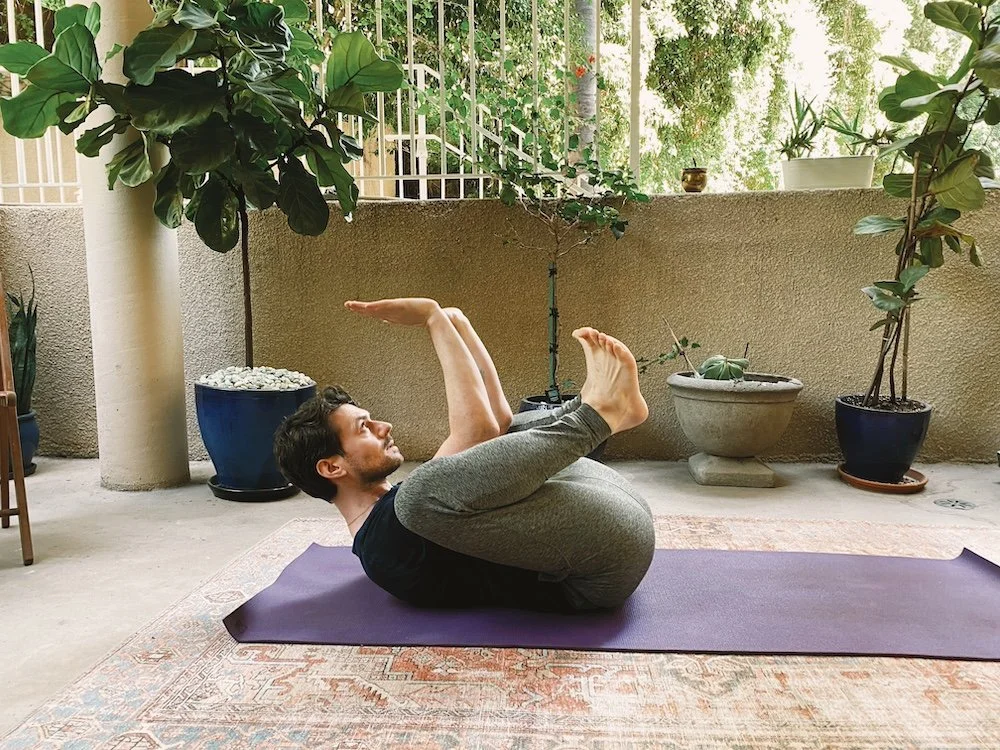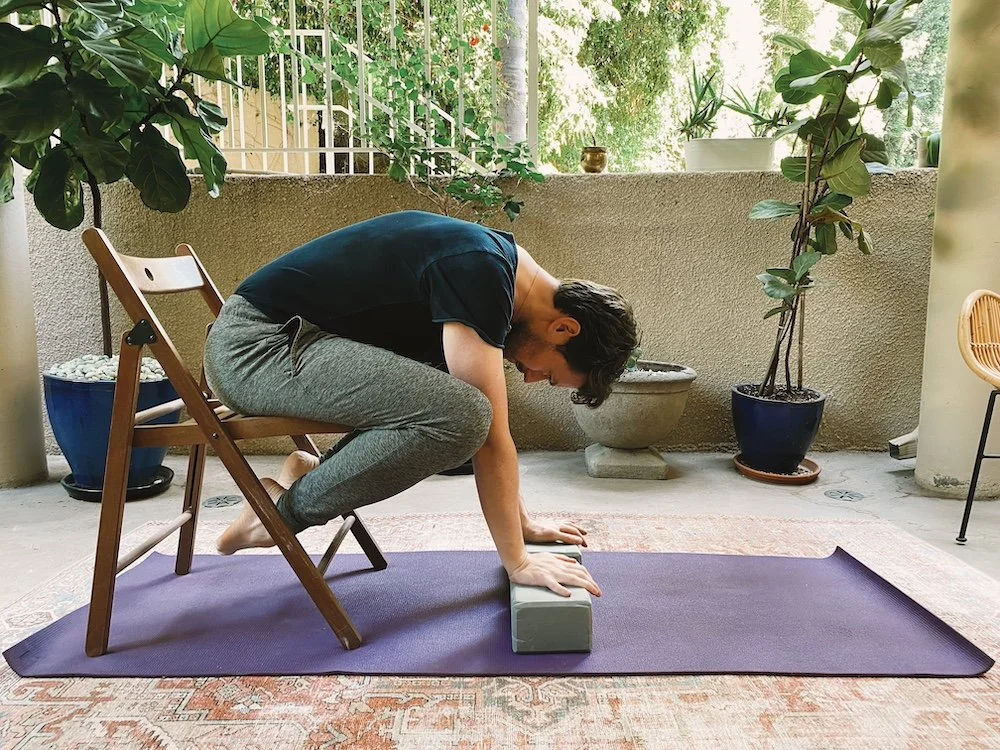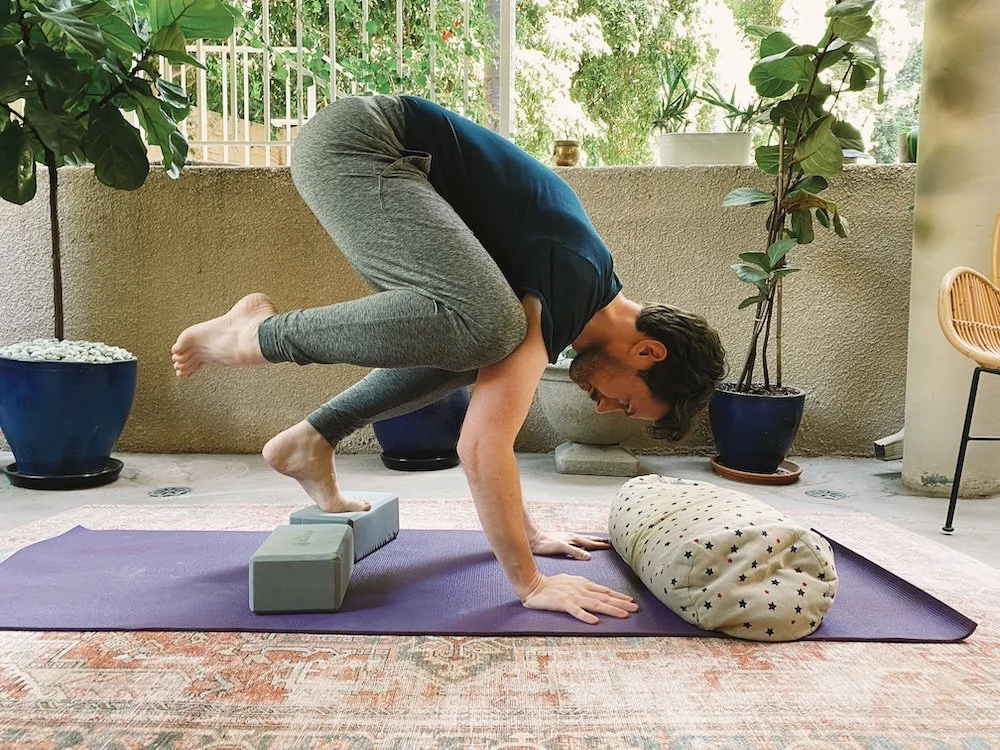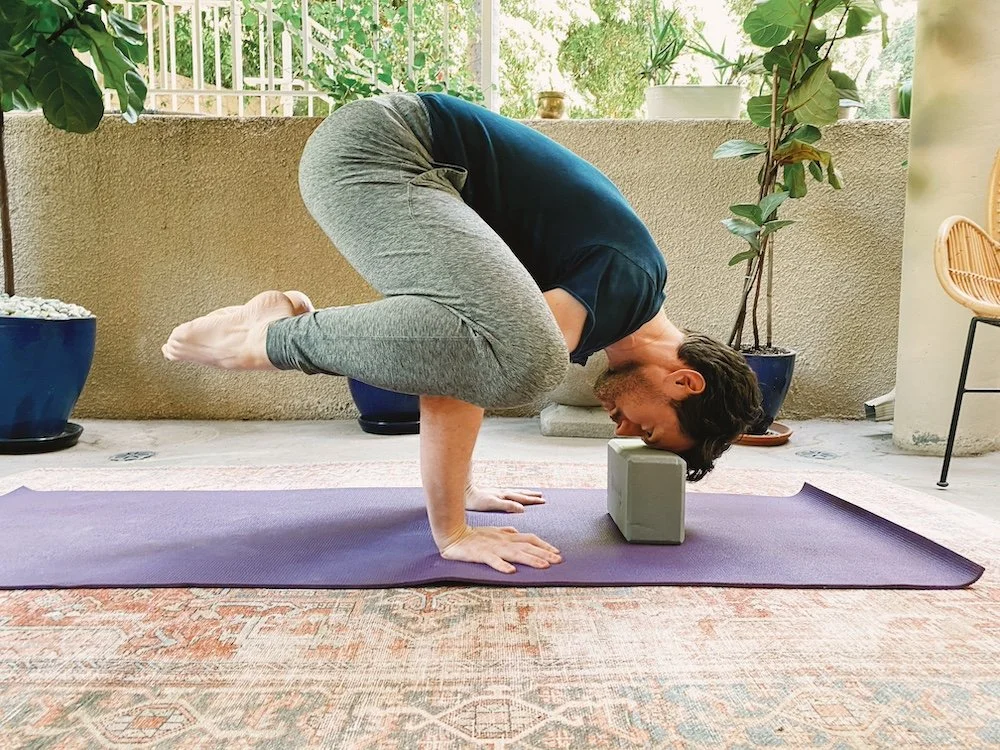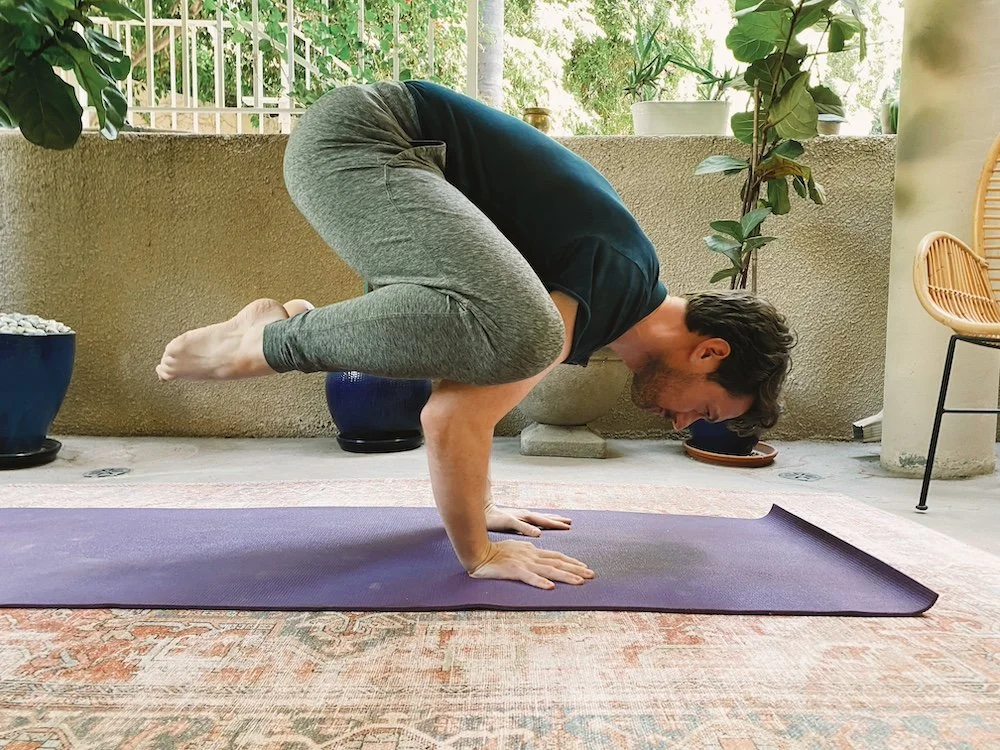Many teachers remember the first time they introduced Crow in class: some students freeze in fear, others wobble, and a few seem to float effortlessly. Our role is to meet students where they are, offering accessible entry points that build confidence rather than intimidation.
Crow, or Kakasana, is often perceived as an “advanced” arm balance because it requires weight-bearing in the arms, core activation, and a willingness to lean into uncertainty. But the truth is: not all Crows look the same. When we present it as a spectrum of variations, we empower students to explore at their own pace while avoiding the pressure of “success or failure.”
Instead of focusing solely on strength, we can highlight the broader benefits Crow offers: awareness of body positioning, trust in one’s own capacity, and the courage to try. Offering multiple variations helps students access these benefits without overloading wrists and shoulders or triggering fear of falling.
Warming Up for Crow:
When preparing students for Crow, warm-ups are key. Encourage them to notice similarities between familiar postures and the arm balance they’re working toward. A progressive set might include:
1. Plank → Chaturanga Holds — build pressing and lifting actions in arms and core. Knees on the floor is a great option here!
2. Boat Pose (Navasana) — strengthen core and hip flexion to draw knees toward arms.
3. Happy Baby (Ananda Balasana) or Malasana (Garland Pose) — open hips and mimic the knee-to-arm positioning of Crow.
4. Cat Rounding / Protraction Drills (Tabletop or Plank) — stabilise shoulders by pushing the floor away and rounding the upper back.
5. Forward Lean Drill — from Downward Dog, shift shoulders slightly past wrists and return; or from Plank, move shoulders ahead of wrists with control. Builds confidence in leaning forward while strengthening wrists and shoulders.
Teaching Variations of Crow:
When you offer Crow Pose in class, frame it as a menu of options rather than a single goal. Here are progressive variations, each with simple teaching cues you can give your students:
Reclining Crow
Lie on the back, bend knees toward sides.
Press inner knees into upper arms.
Option to hold blocks in hands and press up as if pushing the floor away.
Emphasize: “Engage without wrist pressure.”
Chair Crow
Sit at the front edge of a chair, blocks in front.
Lean forward, hands on blocks, arms pressing into knees.
Lift feet and tuck under the chair.
Say: “Practice lifting without fear of falling.”
Crow with Blocks Under Feet
Squat with feet on blocks to raise knees higher.
Hands about shoulder-width apart on the mat.
Shift forward, try lifting one foot at a time.
Remind: “One foot off the ground still builds strength.”
Crow with Forehead Block
Place a foam block/bolster in front of the mat.
Lean forward, rest forehead lightly on the block.
Keep toes down or lift one/both feet.
Reassure: “The block adds stability and confidence.”
Flying Crow
Squat, hands about shoulder-width apart, fingers spread.
Knees on outer upper arms.
Shift weight forward, gaze past fingertips.
Lift one or both feet. Use a bolster in front for moral support!
Encourage: “Lift up and over, not just forward.”
By teaching Crow in stages, we guide students toward discovering that every version is valid. Progress isn’t about “finally balancing,” but about cultivating focus, strength, and resilience.
The next time you introduce Crow in class, frame it less as a peak pose and more as an opportunity: a chance for students to practice curiosity, explore variations, and celebrate each attempt — whether they lift off, wobble, or even tip forward into a bolster. That shift in perspective can turn a potentially intimidating pose into one of the most empowering moments of the practice.
